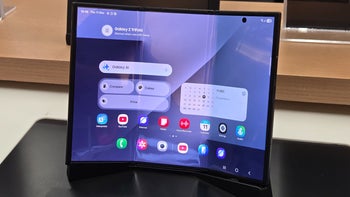CPU on the current iPhone line performs 385 times better than the one that powered first iPhone
Cumulative improvement in CPU performance from OG iPhone to iPhone 17 could hit 500x.

The iPhone has undoubtedly come a long way since it was first released more than five years ago. There is no question that the world changed with the launch of the iPhone on June 29, 2007. As the proud owner of the OG iPhone in 2007, I could see that once Apple replaced the iPhone's connectivity with AT&T's slow-as-molasses EDGE with cutting-edge 3G speeds, the device would become a mobile monster.
As years go by, Apple's A-series application processors get more powerful and energy-efficient
Things were so slow with EDGE connectivity that the only way to watch a YouTube video clearly was when you could find a Wi-Fi connection around you. Even worse, if you were using the Safari browser, you could not make or receive a call at the same time. If someone tried to call you while you were checking out the New York Times website, for example, your incoming calls went right to voicemail. In the case of an emergency, that is not good.

The A18 Pro powers the iPhone 16 Pro and iPhone 16 Pro Max. | Image credit-Apple
Since the release of the OG iPhone, Apple has greatly improved the battery capacity from 1400mAh to 4685mAh (with the iPhone 16 Pro Max). The OG iPhone was also equipped with 128MB of RAM compared to 8GB on all iPhone 16 models (for Apple Intelligence purposes). The rear camera on the OG iPhone was 2MP compared to the 48MP Wide camera on the iPhone 16 Pro Max (along with the 48MP Ultra-wide camera and the 12MP Telephoto camera).
What about the processor? The original iPhone was powered by an ARM11-based SoC from Samsung with a clock speed of 412MHz. For the iPhone 3GS released in 2009, Apple used an ARM Cortex-A8 core Samsung CPU (APL0298C05). Apple moved to a 64-bit architecture for the first time with the A7 chipset used to power the iPhone 5S in 2013. The chip was built by Samsung. The next year, Apple made a shift to TSMC for the A8 chipset used on the iPhone 6 and iPhone 6 Plus. This SoC was built on TSMC's 20nm process node.
The A9 was a bit unusual since both Samsung and TSMC built the chipset for Apple. The latter built it on its 16nm process node while Samsung used its 14nm process. Despite Samsung's use of a slightly more advanced process node, one benchmark test revealed that TSMC's version of the A9 SoC provided iPhone 6s and iPhone 6s Plus users as much as two additional hours of battery life.
This led to the so-called "Chipgate" scandal, and some of those buying new iPhones were demanding a model using TSMC's chipset. We even showed you how to determine which SoC was inside your iPhone 6s or iPhone 6s Plus. Apple said the actual variation in battery life between the two chipsets was 2%-3% in TSMC's favor and this was actually backed up by benchmark tests.
From the OG iPhone to iPhone 16 line, iPhone CPUs have had a 384.9x increase in performance
According to Japanese tech blog PC Watch, using Geekbench to monitor the performance of iPhone CPUs, starting with the OG model in 2007, there is an annual improvement rate of 40%. Overall, from the OG iPhone to the iPhone 16 series, the iPhone CPU has increased in performance by 384.9x. With the improvements we could see with the A19/A19 Pro application processors, the improvement from the OG iPhone to the latest iPhone series could take the improvement to 500x or higher.
The A19/A19 Pro will both be built using TSMC's third-generation 3nm process node. Next year's A20 application processor should be the first A-series chips built by TSMC using its 2nm process node. As the process node gets smaller, so does the size of the transistors used on a chip. That increases the transistor density, which measures the number of transistors that can be packed into a specific area of a chip. This number is expressed as millions of transistors per square millimeter (MTx/mm²).
A higher transistor density means a chip is, in theory, more powerful and energy efficient than chips with a lower transistor density. After 2nm, TSMC is expected to start mass production of 1.4nm chips during the second half of 2028.
Follow us on Google News













Things that are NOT allowed:
To help keep our community safe and free from spam, we apply temporary limits to newly created accounts: